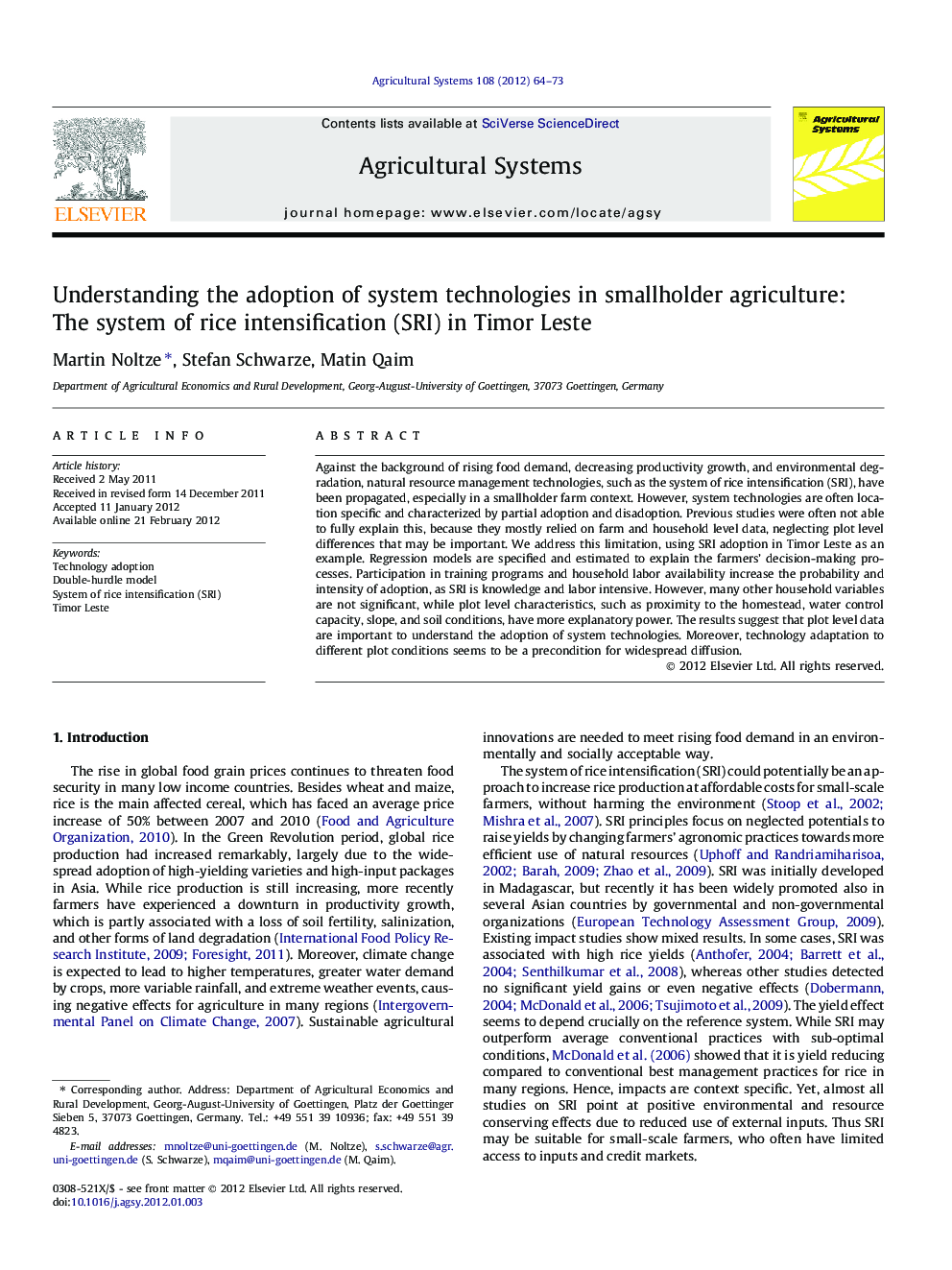| Article ID | Journal | Published Year | Pages | File Type |
|---|---|---|---|---|
| 4491436 | Agricultural Systems | 2012 | 10 Pages |
Against the background of rising food demand, decreasing productivity growth, and environmental degradation, natural resource management technologies, such as the system of rice intensification (SRI), have been propagated, especially in a smallholder farm context. However, system technologies are often location specific and characterized by partial adoption and disadoption. Previous studies were often not able to fully explain this, because they mostly relied on farm and household level data, neglecting plot level differences that may be important. We address this limitation, using SRI adoption in Timor Leste as an example. Regression models are specified and estimated to explain the farmers’ decision-making processes. Participation in training programs and household labor availability increase the probability and intensity of adoption, as SRI is knowledge and labor intensive. However, many other household variables are not significant, while plot level characteristics, such as proximity to the homestead, water control capacity, slope, and soil conditions, have more explanatory power. The results suggest that plot level data are important to understand the adoption of system technologies. Moreover, technology adaptation to different plot conditions seems to be a precondition for widespread diffusion.
► System technologies are characterized by partial adoption among smallholders. ► Previous studies have tried to explain this with farm and household level data. ► Using a recent survey, we analyze adoption patterns of SRI in Timor Leste. ► Beyond farm and household data, plot data are crucial to understand adoption of SRI. ► Wider adoption of system technologies needs site-specific adaptation and extension.
